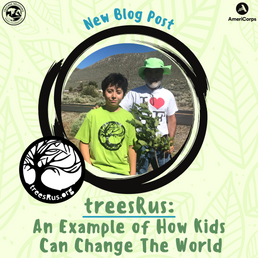A Bird's Eye View
- BIlly Kaselow, AmeriCorps Naturalist Educator
- Nov 1, 2018
- 3 min read
For the better part of the last decade, the primary focus of my curiosity has been the lives and diversity of North American birds. This fascination has brought me to the corners of the continent and just beyond, but only for summer jobs or brief trips in the winter. Ever since I became really aware of the presence of birds, and wildlife more generally, their movements have defined the seasons. Until this year, the mid-Atlantic has been the stage on which all dramatic seasonal changes played out.
My annual summer pilgrimages for field study had made me comfortable with the idea of travel. I considered myself experienced in leaving. It wasn’t until weeks after I arrived in Reno that I recognized the feeling of missing something important to me - Autumn in the east. The changing of the seasons is a time when I feel most alive. I feel the shift in the breeze and the movements of birds. The rattle of drying leaves signal relief from months of humidity and the songs of birds, conspicuously absent, are replaced by whispered flight calls and the pulse of insects enjoying the lengthy bloom of goldenrod and aster.
As the fall edges into November and winter begins, many of New Jersey’s naturalists will move from the forests to the coast where quickening winds push scoters and gannets by the thousands south from the Arctic to feed in swells of warmer water. Gray and harbor seals begin to dot sandbars in protected coves and many of the remaining songbirds will feed on bayberry and cedar that cling to sandy, windblown soil.

White-winged scoters off the shore of Sandy Hook
It became clear on the long drive west that I was entering a different kind of ocean; an inland sea of sage that appeared equally vast and impressive, but stoic in its relative silence. There was no powerful crash of waves or crackle of receding foam. The frenzied cries of gulls replaced by the distant croaks of solitary ravens.

Common Raven
I have scarcely felt more out of place, but a month and a half later I am beginning to settle in. Aspens turning gold in Peavine’s protective nooks and massive Cottonwoods shading the banks of the Truckee remind me of deciduous forests of the east. The bursting seeds of rabbitbrush are a welcoming softness and wheeling flocks of horned larks and American pipits are translators of high-desert rhythms.

View of Mt. Rose from the top of Mt. Peavine - Rabbitbrush in the foreground
This transition has given me a new perspective on the word “home”. I have struggled with the concept having grown up in a densely populated and ardently consumerist community of northern New Jersey, and was educated in a small but bustling city of northern Delaware. The complete absence of open space and inability to escape the screech of the Amtrak or glow of streetlights led me to cling to the idea of travel, digging through field guides to study plumage details and range maps. I would travel as a means of knowing as many habitats, ecosystems, species,and cultures as possible while forming a broader sense of home on Earth. But as the cliche warns: it took leaving - at the right time in my case - to show that my home had been well established.
Places like the Celery Farm of Allendale, Sandy Hook Gateway NRA, Forsythe NWR, and DeKorte park all sit in the shadows of cities but are undisputed ecological gems. These are the places that truly raised me, standing in contrast to suburban sprawl and in direct defiance of the smog across the bay, they bring people together to enjoy and protect them and make the lives of wildlife a little easier.
--
Up until recently I have been a staunch opponent of the idea of plants as ornaments, particularly exotic species that offer nothing to native wildlife and do the environment a disservice. I have thus had issues with arboretums and parks. However, places like Idlewild Park and the May Arboretum have ushered me through periods of homesickness with familiar east coast plants - Asters, Oaks, Sycamores, and Bald Cypress - and I can’t well refuse others that sanctuary.
The May Arboretum was recently described to me as a living museum, species and varieties of plants from all over the world all well-tended to insure their mutual health. This is by no means a natural ecosystem, but there is something beautiful about the man-made mosaic of life that it represents. If these parks and arboretums with their tempered wildness can ease Reno’s people into a sense of place that lends itself to compassion and appreciation for the living things with which we share the space, that is certainly worth caring for.
Contributing Writer: Billy Kaselow
Contributing Photographer: Billy Kaselow
Contributor Contact: billy@tmparksfoundation.org
































代发外链 提权重点击找我;
google留痕 google留痕;
Fortune Tiger Fortune Tiger;
Fortune Tiger Fortune Tiger;
Fortune Tiger Slots Fortune…
站群/ 站群;
万事达U卡办理 万事达U卡办理;
VISA银联U卡办理 VISA银联U卡办理;
U卡办理 U卡办理;
万事达U卡办理 万事达U卡办理;
VISA银联U卡办理 VISA银联U卡办理;
U卡办理 U卡办理;
온라인 슬롯 온라인 슬롯;
온라인카지노 온라인카지노;
바카라사이트 바카라사이트;
EPS Machine EPS Machine;
EPS Machine EPS Machine;
EPS Machine EPS Machine;
무료카지노 무료카지노;
무료카지노 무료카지노;
google 优化 seo技术+jingcheng-seo.com+秒收录;
Fortune Tiger Fortune Tiger;
Fortune Tiger Fortune Tiger;
Fortune Tiger Slots Fortune…
站群/ 站群
gamesimes gamesimes;
03topgame 03topgame
EPS Machine EPS Cutting…
EPS Machine EPS and…
EPP Machine EPP Shape…
Fortune Tiger Fortune Tiger;
EPS Machine EPS and…
betwin betwin;
777 777;
slots slots;
Fortune Tiger Fortune Tiger;